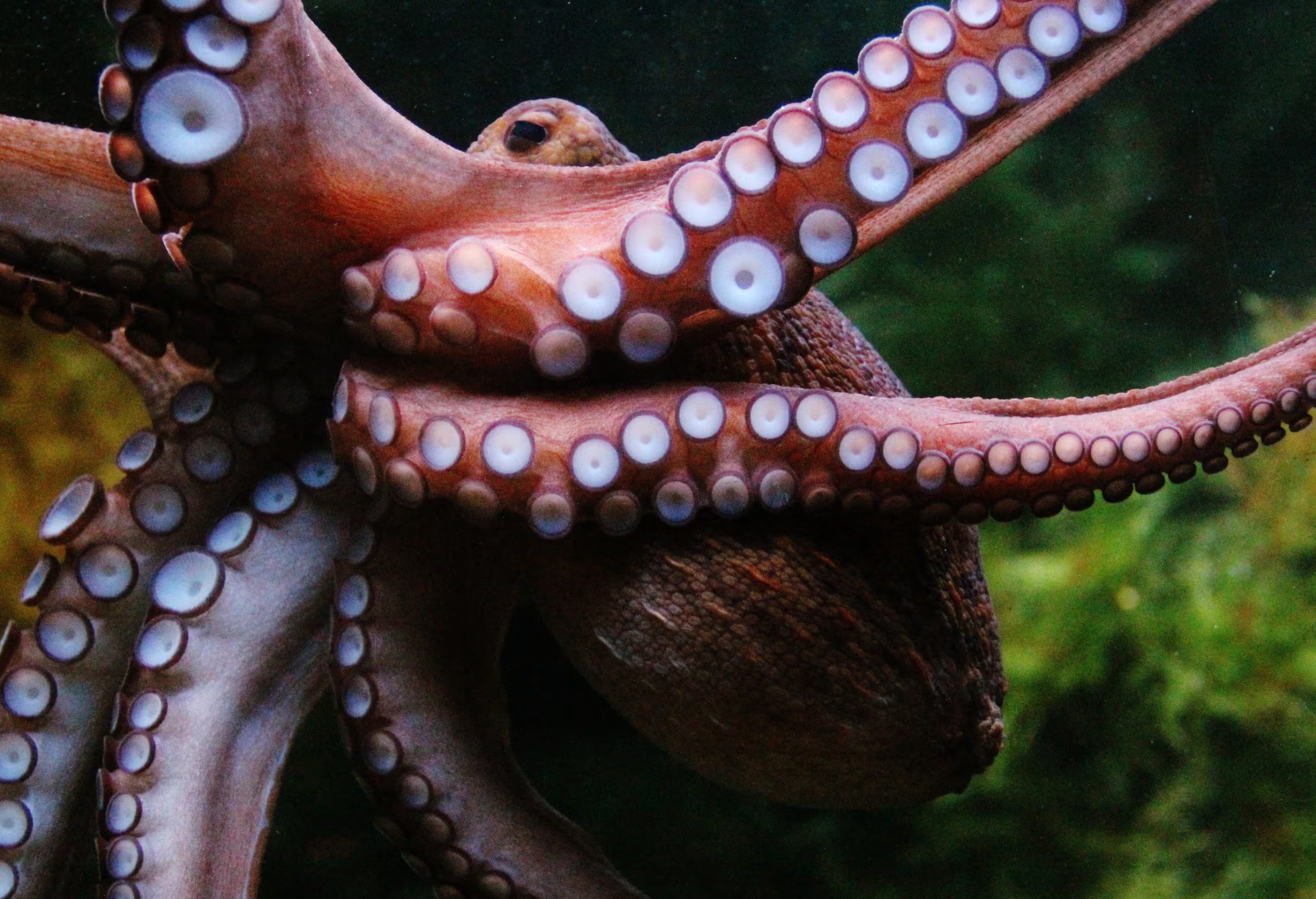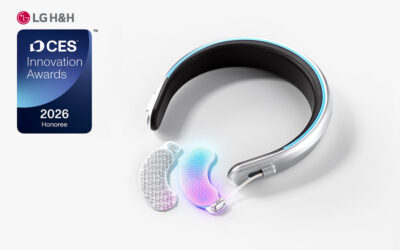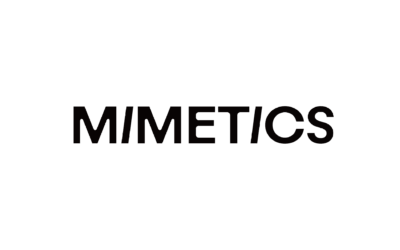The title of the documentary film “My Octopus Teacher” was no exaggeration. Scientists have learned from octopus suction cups how to deliver drugs deep into the skin, opening a way to administer medication without injections. Animal experiments have already confirmed the patch’s effective drug delivery, raising expectations for faster commercialization. Octopus suction cup-inspired gloves could also prove useful in operating rooms or underwater excavation sites, providing a non-slip grip even in wet conditions.
The biomimicry of octopus suction cups is being led by Korean scientists. Professor Chang-hyun Bang from the Department of Chemical Engineering at Sungkyunkwan University and Professor Ki-hyun Kim’s team from the College of Pharmacy announced on the 1st that they have developed a drug delivery patch modeled after octopus suction cups, confirming its safety and efficacy on both animal and human skin. The study was selected as a cover article in ACS Nano and was published online on January 22. The first author of the paper is Ji-hyun Lee, a Ph.D. student in the Department of Chemical Engineering at Sungkyunkwan University.

◇Even the Hard-to-Penetrate Stratum Corneum Can Be Bypassed
Transdermal drug delivery is convenient and allows for localized application, but its effectiveness has been limited. The skin’s natural protective function makes it difficult for external substances to penetrate, and the dense stratum corneum in particular poses a significant barrier to drug absorption.
The research team developed an adhesive cup that mimics the structure of octopus suction cups to deform the stratum corneum and enhance penetration. In 2017, Professor Chang-hyun Bang reported in Nature that the three-dimensional protrusions inside octopus suction cups are the key to their adhesive power. Observing a suction cup, one can see rounded protrusions within the dome, resembling a ball placed inside a cup.
Based on this design, the researchers created a dome-shaped adhesive cup. When the cup is pressed against a surface, it pushes surface moisture outward, while some moisture is drawn inward along the sides of the protrusions. When the force is released, the space between the protrusions and the surface becomes void, creating a vacuum. This generates a negative-pressure environment, producing suction.

The newly announced patch features suction cups with a diameter of 3 mm attached to one side. When applied, the patch allows drugs to penetrate the skin much more deeply than before. This is due to the negative pressure created by the suction cups, which deforms the structure of the stratum corneum. The research team stated, “Using transmission electron microscopy, we observed that micro-gaps formed between the layers of the stratum corneum under the patch’s negative pressure,” allowing drugs to reach deeper layers of the skin.
The researchers conducted experiments on mice, inducing atopic dermatitis and delivering therapeutic natural compounds using the suction cup patch. After 28 days, the skin had cleared, showing greater therapeutic effects compared to simply applying the drug on the surface. Drug delivery effectiveness was also confirmed on human skin.
The study included Dr. Su-nam Kim from the Natural Products Research Institute at the Korea Institute of Science and Technology (KIST), Professor Jin-ung Kim from Sungkyunkwan University’s Department of Chemical Engineering, and Professor Ki-ra Lee from the Department of Chemistry at POSTECH. Professor Chang-hyun Bang commented, “The octopus suction cup-inspired patch can be applied not only to pharmaceuticals but also to cosmetics.” The technology has been licensed to Sungkyunkwan University’s startup, MIMETICS, and product development is underway.
◇Suction Cups for Oral Drug Delivery
Swiss scientists have also developed an oral drug delivery patch inspired by octopus suction cups. Last year, Professor Jean-Christophe Leroux of ETH Zurich reported in Science Translational Medicine that his team developed a drug patch that adheres to the inside of the human cheek. The suction cups measure 11 mm in width and 6 mm in height, and their structure is similar to that developed by the Korean research team.
The researchers tested the patch on the oral mucosa of pigs, which is similar to humans. Desmopressin, an antidiuretic peptide, was loaded into the suction cups. Peptide drugs, due to their large molecular size, are difficult to absorb orally and are usually injected directly into the bloodstream. Desmopressin is one of the few peptide drugs that can be administered orally.

Using the suction cup patch for three hours resulted in 16.4% of the drug being bioavailable in humans, a significantly higher figure than the 0.12% observed for conventional oral drugs. Even when the patch was applied for just 10 minutes, bioavailability reached 3.2%, still higher than traditional oral administration. The research team explained that the tissue inside the suction cup stretches by 275%, increasing the surface area available for drug penetration.
Professor Leroux noted, “Drugs for diabetes or obesity could also be delivered via patches instead of injections. Insulin, for example, is broken down in the digestive tract, but using a suction patch minimizes this problem.” Such patches could also benefit children who require regular injections. The researchers anticipate that growth hormone injections could eventually be replaced with patch delivery.
◇Octopus-Inspired Gloves for Underwater Work
The octopus suction cup-inspired technology is spreading beyond drug delivery, expanding into various applications. It can be used for gripping or moving objects. Professor Chang-hyun Bang’s team at Sungkyunkwan University successfully demonstrated moving an 8-inch semiconductor wafer underwater using an octopus suction cup-inspired adhesive patch.
By mimicking octopus suction cups, objects can be securely gripped even in wet or underwater environments. In 2022, Professor Michael Bartlett’s team at Virginia Tech reported in Science Advances that they developed octopus-inspired gloves for underwater work, replicating the way octopuses grasp objects with their tentacles.
Octopuses use roughly 2,000 suction cups on their eight arms to hold coral and pick up shells. The researchers attached suction-cup-like structures to gloves shaped like toilet-cleaning brushes. When air is drawn from inside the glove, negative pressure forms, causing the cups to adhere to objects.
A LiDAR sensor was also mounted next to the cups. When the laser detects that an object is close, negative pressure is applied automatically, making the suction cups stick as soon as the glove touches the object. The researchers noted that this could assist people working underwater or in wet environments, such as archaeological excavations or medical procedures.
Octopus suction cups could also inspire adhesive sensors or printing techniques for transferring thin materials onto substrates only when needed. In 2016, Professor Hyun-hyeop Ko from UNIST and Dr. Hyung-jun Kim from KIST reported in Advanced Materials the development of adhesive pads for wearable health sensors inspired by octopus suction cups.
Octopuses control adhesion by varying the thickness of the suction cup muscle. Thin cup walls reduce internal pressure, creating strong adhesion, while thick walls weaken it. The researchers mimicked this by making the pad’s adhesion temperature-responsive: above 32 °C, the pad thins and sticks strongly; at lower temperatures, it thickens and releases.
The team explained, “When used in wearable band-type health sensors, the adhesive pad sticks at normal body temperature but can detach when rinsed with cold water. In printing applications, thin materials can be transferred to substrates without damage using these pads.”
References
- ACS Nano (2024), DOI: https://doi.org/10.1021/acsnano.3c09304
- Science Translational Medicine (2023), DOI: https://doi.org/10.1126/scitranslmed.abq1887
- Science Advances (2022), DOI: https://doi.org/10.1126/sciadv.abq1905
- Nature (2017), DOI: https://doi.org/10.1038/nature22382
- Advanced Materials (2016), DOI: https://doi.org/10.1002/adma.201601407
Reporter: Young-wan Lee | ywlee@chosunbiz.com




